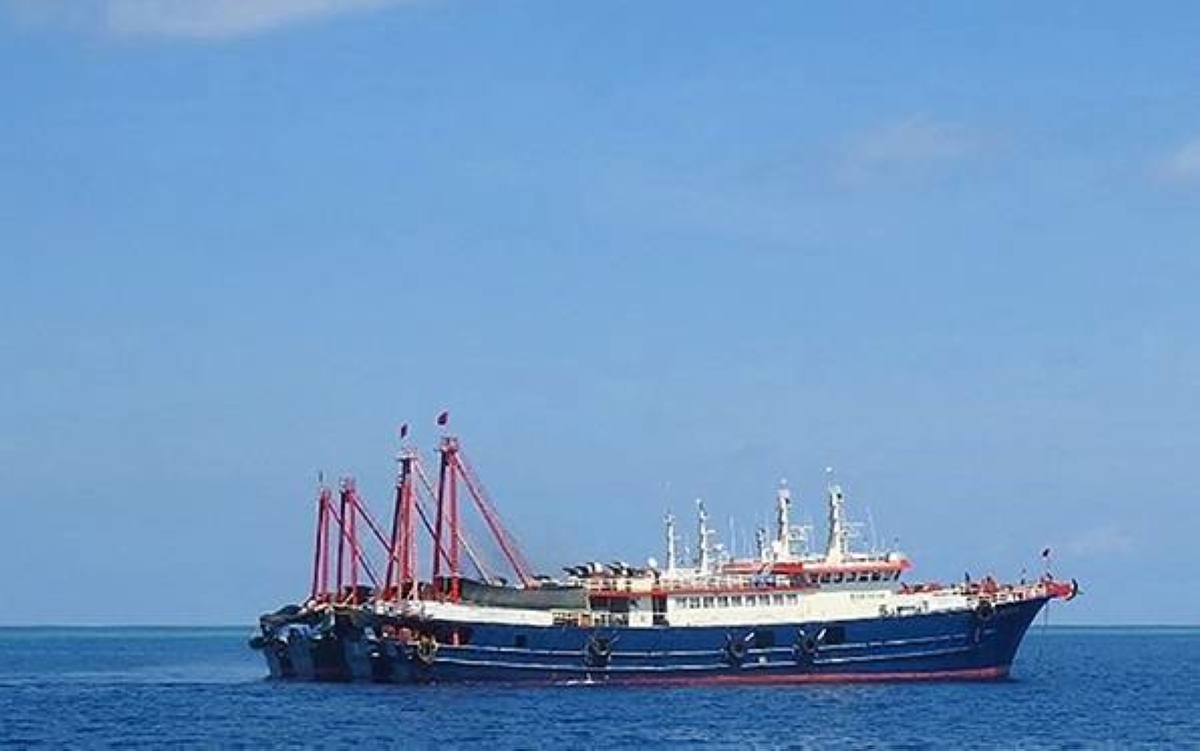At least 27 Chinese ships have been observed in the West Philippine Sea (WPS) in what experts are calling a “major maritime militia rotation” by Beijing. This comes just days after the Philippines and China agreed to ease tensions in the region through diplomatic means.
The 27 Qiong Sansha Yu-class ships were spotted south of the Spratly Islands and east of Bajo de Masinloc (Panatag or Scarborough Shoal). These vessels are operated by the state-owned Sansha Fisheries Development Company and are known to work in coordination with the China Coast Guard (CCG) in enforcing China’s territorial claims in the South China Sea, including the WPS.
Retired United States Air Force Col. Raymond Powell believes that this rotation indicates that other Chinese militia ships, who have been stationed in the area for some time, will now head home after a period of overlap. This suggests a continuous presence of Chinese maritime forces in the region.
The Spratly Islands, located in the South China Sea, are a disputed archipelago claimed by multiple countries including the Philippines, Malaysia, Vietnam, Taiwan, and China. These islands are home to military structures occupied by forces from these nations. Additionally, Brunei has also claimed an exclusive economic zone in the area.
Bajo de Masinloc, also known as Scarborough Shoal, is another disputed territory claimed by both Manila and Beijing. The Philippines bases its claim on the 1734 Velarde map, while China asserts its ownership through the controversial nine-dash line. The Chinese maritime forces effectively captured the area in 2012 after a standoff with Philippine fishing boats.
Recently, the Philippines and China held the 8th Bilateral Consultation Mechanism (BCM) on the South China Sea in Shanghai. During this meeting, the two countries engaged in candid and in-depth discussions on the situation in the region. Both sides agreed that maintaining communication and dialogue is crucial for maritime peace and stability.
Furthermore, they expressed their commitment to avoiding any escalation of tensions and emphasized the importance of continuous dialogue to ensure peace and stability at sea. Both countries also pledged to improve their maritime communication mechanism to effectively handle emergencies, particularly in areas such as the Ren’ai Shoal (Ayungin Shoal), where frequent encounters between Philippine and Chinese vessels have been recorded.
The Philippine Marine personnel stationed on the BRP Sierra Madre, deliberately grounded at Ayungin in 1999, have encountered Chinese blockades numerous times during their routine Rotation and Resupply (RoRe) missions. Last year, Chinese Coast Guard vessels were accused of using lasers and water cannons to prevent Philippine supply boats from completing their missions. China justified these actions by claiming that the Philippine government’s transportation of large-scale construction materials to BRP Sierra Madre was a violation of a consensus and an attempt to permanently occupy the reef.
In response to the recent developments, the Philippine Coast Guard (PCG) spokesperson on the West Philippine Sea, Commodore Jay Tarriela, called on China to honor its commitments made during the BCM and to avoid escalating tensions in the South China Sea. Tarriela emphasized the importance of commitment and sincerity in implementing agreements reached during diplomatic negotiations.
The situation in the West Philippine Sea remains a topic of concern, and the Philippines will continue to expose any acts of aggression and provocation by China. The international community will closely monitor the developments in the region as countries strive for peaceful resolutions and the maintenance of maritime stability.
Source: The Manila Times








